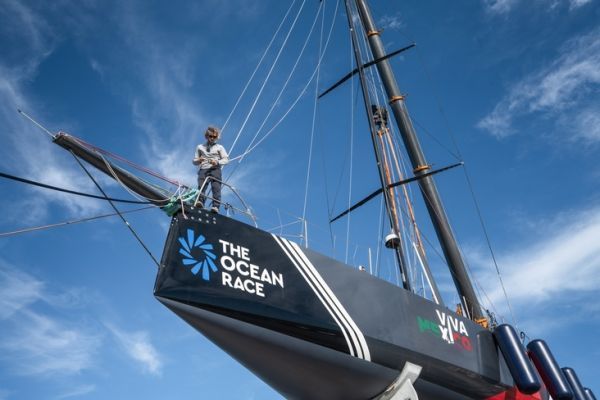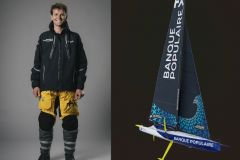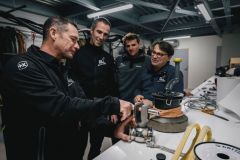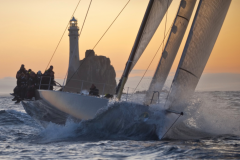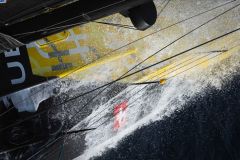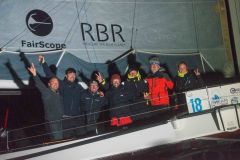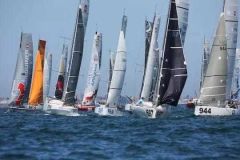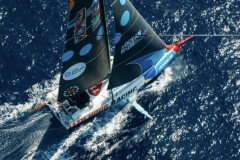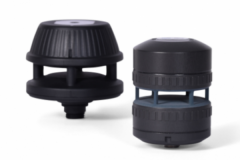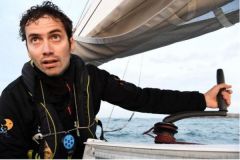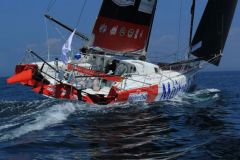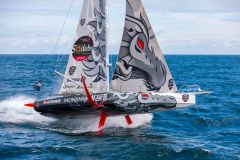One of the most difficult crewed races
The Ocean Race is often described as one of the longest and most challenging crewed offshore races. Many of the world's best sailors have spent years of their careers in it. For the record, Sir Peter Blake, participated in the first edition of what was then the Whitbread Round the World Race in 1973-74. He returned to the race every year before finally winning the Grail in 1989-1990 with Steinlager 2.
A 14th edition for The Ocean Race
This is the 14th edition of the round the world race with stopovers. It takes place 500 years after the first round-the-world race carried out during the Magellan expedition and 50 years after the first edition of the race in 1973-1974. Named the Whitbread Round the World Race at its inception, it retained its name until 1998 before being renamed the Volvo Ocean Race from 2001 to 2018. Originally held every four years, it has been held every three years since the 2008-2009 edition.
On January 8th, the 5 IMOCA and 6 VO65 will participate in the In-port race in Alicante before the big start on January 15th.
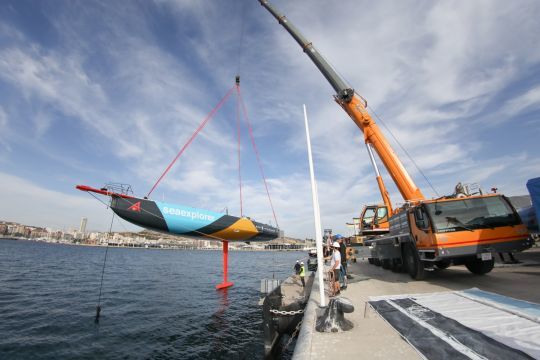
A crewed race inspired by a solo round-the-world race
Guy Pearce and Anthony Churchill, inspired by Robin Knox Johnston's single-handed circumnavigation of the globe in the 1969 Sunday Times Golden Globe Race, presented the idea of a crewed race around the world to Admiral Otto Steiner of the British Royal Naval Sailing Association. He convinced Colonel Bill Whitbread to sponsor the adventure, known as the Whitbread Round The World Race. The first edition in 1973 welcomed 19 boats and 167 sailors, for 4 legs starting from Portsmouth with stopovers in Cape Town, Sydney, and Rio de Janeiro.
In its early days, the race was "rustic". The refrigerators were filled with fresh meat, the boats were comfortable and some teams even took a cook with them. This first edition will be marked by three deaths. Three others will lose their lives during the following editions.
Two classes of boats for the 2023 edition
For the first time, after a test bench on The Ocean Race Europe in 2021 the Ocean Race will host two classes of boats. We will of course find the VO65s that have participated in the last two editions of the round the world race. Each time the level was tight, so much so that during the last edition, three teams took the start of the last stage with equal points in the general ranking. In the end, it was the Chinese team Dongfeng Race Team, led by Charles Caudrelier, who snatched victory from the Spanish and Dutch teams MAPFRE and Team Brunel, just a few miles before the finish in The Hague, Netherlands.
The newcomers are none other than the ultra-technological IMOCA boats, initially designed for the Vendée Globe, a single-handed round-the-world race.
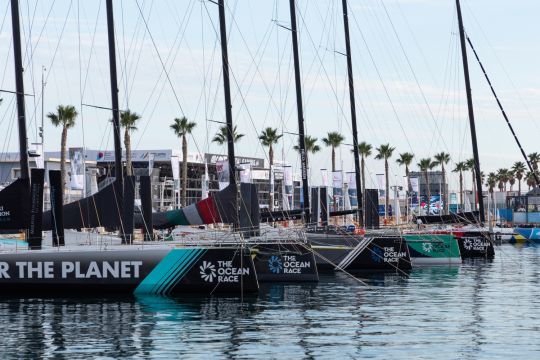
7 stages for a total of 31,300 nautical miles
This 14th edition is composed of 7 offshore legs, with a start and finish in the Mediterranean, a first in the history of the race, and ocean crossings in the Atlantic, Indian, Pacific and Southern Oceans. Each start and finish of a leg is organized in a major international city. In total, the crews will stop in 8 major cities. The victory is awarded to the first to arrive. Stages 3 and 5 will count as double.
At each stopover, teams participate in an in-port race, as well as a series of pro-am races with guests on board. Although the in-port series do not add points to the overall standings, they are still important in case of ties in the overall results at the end of the race.
The course for this edition includes the longest leg in the race's 50-year history. Leg 3 is a 12,750-mile marathon between Cape Town, South Africa, and Itajaí, Brazil.
The VO65 one-designs will only participate in 3 legs in the northern hemisphere, the first, the sixth and the last.
For the first time, the IMOCA fleet will cross the three major southern capes: Cape of Good Hope, Cape Leeuwin and Cape Horn, non-stop.
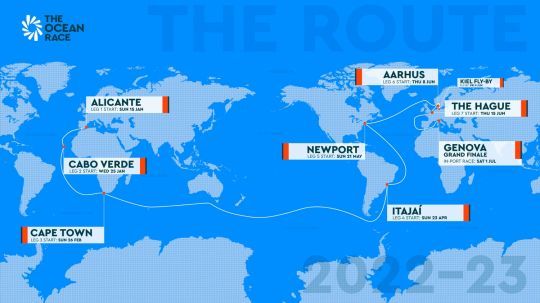
- january 15: Departure from Alicante, Spain
- january 25: Departure from Cape Verde
- february 26: Departure from Cape Town
- april 23: Departure from Itajai, Brazil
- may 21: Departure from Newport
- june 8: Departure from Aarhus, Netherlands
- june 9: Passage through Kiel, Germany
- june 15: Departure from The Hague, Netherlands
- july 1: Final in Genoa, Italy
A mixed crew
As introduced in the 2017-18 edition, the race rules encourage the formation of crews composed of men and women, as well as the training of new young talent. A total of 23 women participated in the last edition, 10 of whom were new to the race. 136 women have participated in the race since 1973.
In IMOCA, the crews will be composed of 4 to 5 people, while there will be 10 in VO65. In each case, a mediaman will be on board to make the experience live from the inside.
